Freeskates Purchasing Guide
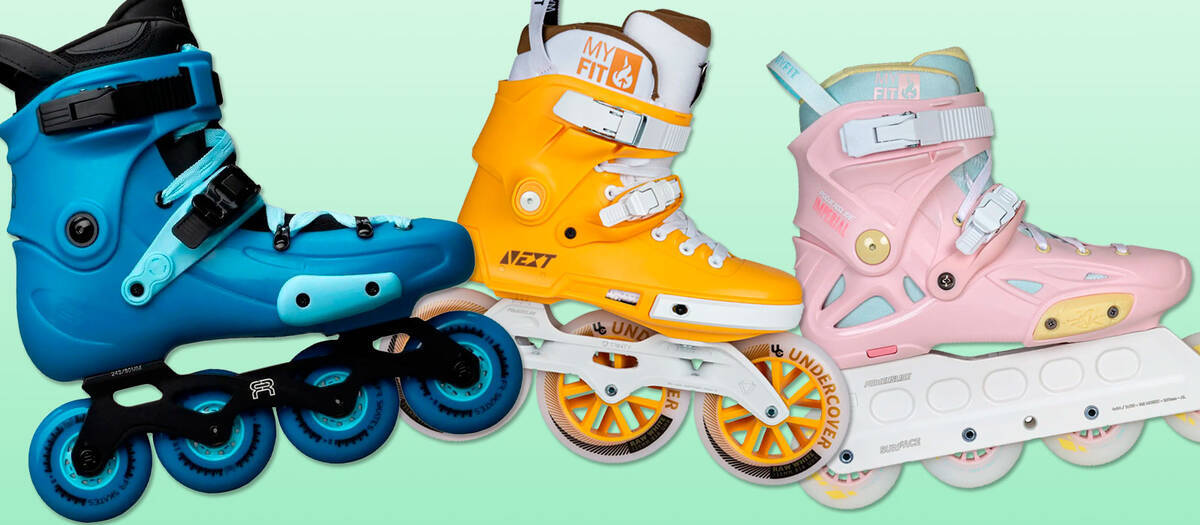
To select the ideal freeskates for your needs, you must find inline skates that correspond to your skating style and the surfaces you frequent. This guide will take you through the essential elements of urban inline and freestyle skating, to assist you in finding freeskates that match your preferences and objectives.
If you're curious about urban inline skates or which features make freestyle slalom skates more responsive, following chapters will provide answers to your queries about freeskates.
Overview
Top Inline Freeskates for Beginners
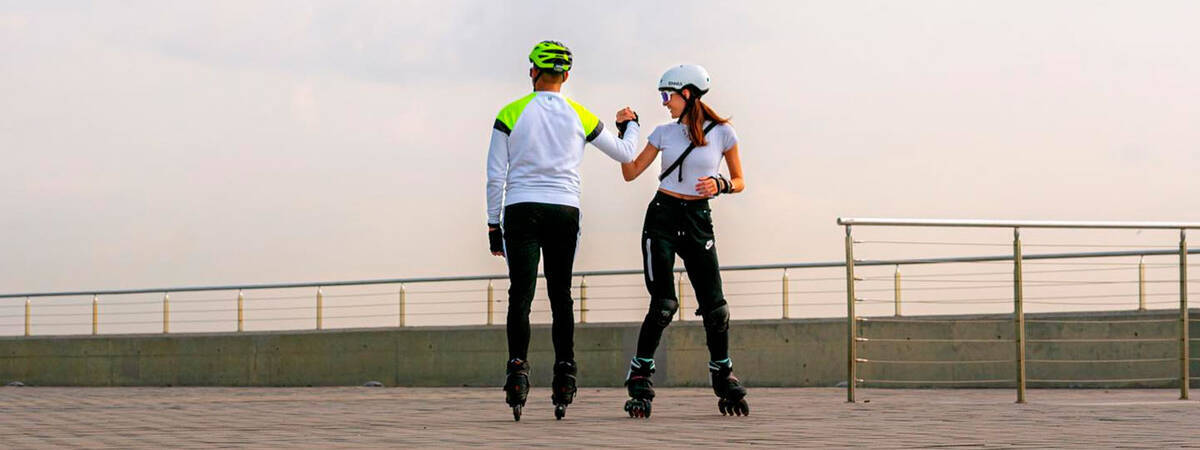
Beginners in freeskating should consider acquiring a versatile pair of freeskates to explore different styles within the sport. As your skills develop, your decisions will likely be informed by the particular style you choose to pursue. The following general guidance is intended for beginners interested in inline skating styles like freeskating, freeriding, freestyle, and slalom.
When selecting inline freeskates, consider these characteristics:
- Comfortable liners: High-quality liners with ample padding and ventilation are vital for prolonged skating. Seek materials that wick moisture and allow breathability to keep feet cool and comfy.
- Effective buckle system: A secure, adjustable buckle system ensures a close fit, enhancing your control and stability. A blend of buckles, laces, and straps permits precise adjustments.
- Boots: A robust hard boot is advisable for freeskating. These are durable, rigid, and impact-resistant, providing excellent ankle support for stability. Moreover, hard boots generally offer better responsiveness than soft boots.
- Ankle Support: Proper ankle support is crucial for preventing injuries and keeping your ankles aligned when performing tricks.
- Wheel sizes: Consider 80 or 90 mm wheels for added stability. Larger wheels raise the centre of gravity, making the skates trickier to control.
- Wheel hardness: Softer wheels are typically easier for beginners as they have better grip on rough surfaces and absorb surface vibrations.
Reflect on these guidelines as you browse our range of freeskates. Additionally, you may filter products by skill level to view models suggested for your experience level.
Understanding Urban Skating
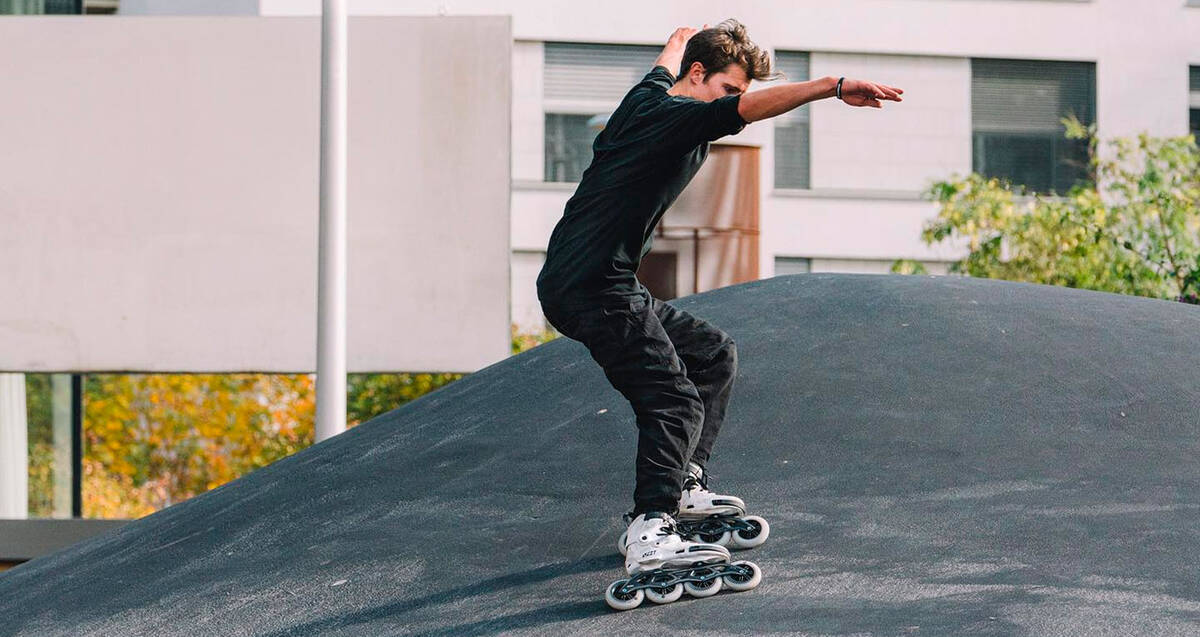
Urban skating, alternatively known as street skating, is about moving through the city with speed and flair. It involves leaping over barriers, descending stairs, and navigating through the urban landscape with fluidity. While it shares some aspects with aggressive skating, such as stair-bashing and wall-riding, it excludes grinding. Urban freeskates are not designed for rail-based tricks but are ideal for dynamic, vigorous skating.
Choosing the Best Urban Inline Skates
Urban skating necessitates a hard boot for toughness and a solid frame capable of withstanding impacts. Comfort is critical since you'll wear the skates for prolonged periods. Seek skates with well-padded liners that offer both comfort and support.
Optimal Wheels for Urban Skating
Urban skates come with wheels crafted for speed and agility, typically ranging from 80 mm to 110 mm in diameter. For long distances, larger wheels aid in speed and retaining momentum, whereas smaller wheels afford better control. For tricks, you may find 100 mm wheels more comfortable than 110 mm ones.
Wheel hardness for urban skates varies from 82A to 88A. If your skating area has rough and uneven surfaces, softer wheels provide a benefit by absorbing more vibrations.
Discover more about wheels for inline skating:
Exploring Freestyle Skating

Freestyle skating focuses on precise and technical movements, including spins, jumps, and slides. Predominantly, it is performed on flat ground, often with lines of cones arranged for skaters to weave through various patterns.
The Essence of Flow in Freestyle Skating
Flow is crucial in freestyle inline skating, signifying the ability to transition smoothly between movements while maintaining control and balance. Freestyle skating often mirrors figure skating, with skilled freeskaters appearing to glide effortlessly above the ground.
Defining Slalom Skating
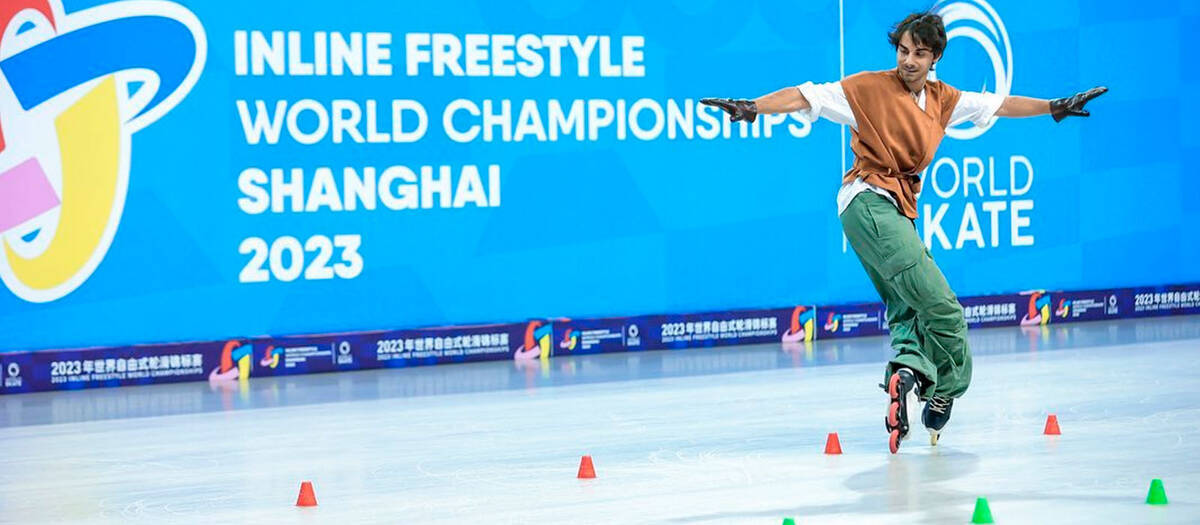
Slalom skating centers on navigating between cones with speed and accuracy. It requires dexterity, equilibrium, and superior footwork. Skates designed for slalom usually have smaller wheels and a shorter frame for enhanced manoeuvrability.
Ideal Slalom Skates
For slalom skates, a shorter frame combined with smaller wheels is pivotal for agility.
The rockered wheel setup, preferred by advanced slalom skaters, features larger centre wheels than those at the front and back. This assembly improves manoeuvrability and assists with trick execution. However, rockered setups can be harder to manage for beginners, complicating basic move learning.
While most freeskates are usable for slalom skating if you're a novice, upon gaining skill, you can explore features that boost precision and control. A rockered wheelbase will significantly enhance your flow during slalom skating. Additionally, consider the liner – experienced skaters often favour built-in liners for greater precision and responsiveness.
Comparing Urban Skating to Freestyle Skating
Urban and freestyle skating share numerous similarities, and they need not be strictly separated.
Urban skating targets city obstacles and diverse terrains. If engaged in urban skating, you might find yourself leaping, stair-descending, or navigating through tight spaces. It incorporates elements from both fitness skating and aggressive skating.
Conversely, freestyle skating is about grace and accuracy. Picture it as dancing on wheels, with movements aiming for fluidity and elegance. Freestyle skating is sometimes nearly synonymous with slalom skating.
Though these disciplines overlap significantly, urban skating is more about adapting the city's structural features creatively, whereas freestyle is executed on smooth and level surfaces. Urban skating weaves through traffic; meanwhile, freestyle involves weaving through cones.
Are you inclined toward the rugged pace of urban skating, or are you more drawn to the artistic aspects of freestyle skating? Your response will guide future selections for freeskate enhancements.
3-Wheeled vs. 4-Wheeled Freeskates: Which to Choose?
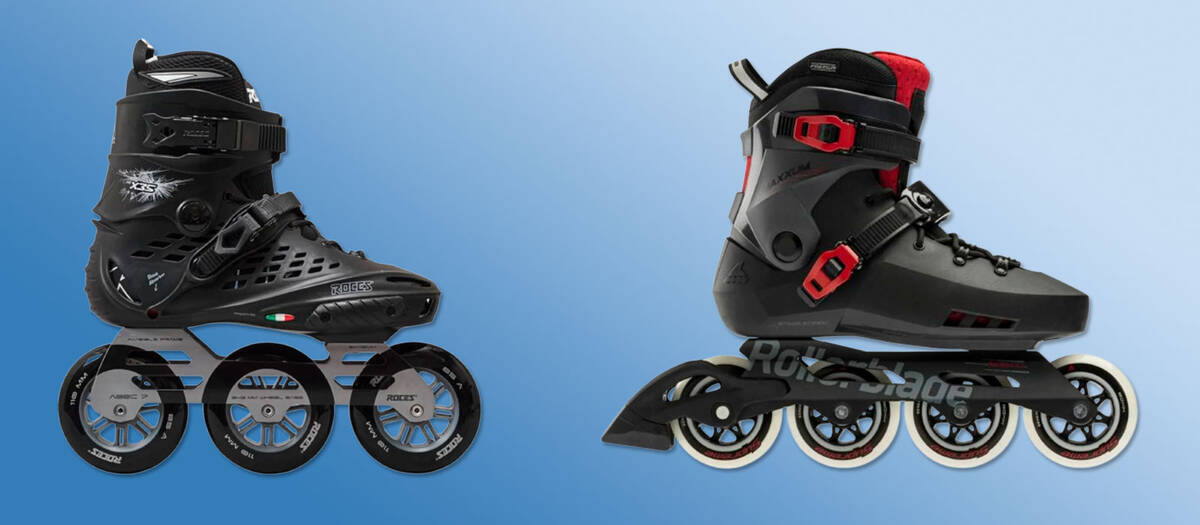
Consider these essential factors when deciding between 3-wheeled or four-wheeled inline skates:
- Beginners should opt for four wheels: Four-wheeled skates offer better stability, making them the preferable choice for inline skating novices.
- Benefits of triskates: Triskates provide significant advantages for advanced skaters. Their shorter wheelbase enhances manoeuvrability, enabling skaters to perform tighter turns and tricks more easily. They also allow for larger wheels, ideal for those keen on covering considerable distances.
- Wheel size: Triskates can house bigger wheels without elongating the skate, promoting higher speeds while retaining agility. This is particularly advantageous for skilled skaters aiming to elevate performance.
Choosing between 3-wheeled or 4-wheeled skates is a matter of personal style and preferences rather than a definitive right or wrong.
Is a Rockered Wheel Setup Beneficial for Freeskating?
For seasoned freestyle skaters, a rockered wheel setup can dramatically enhance their skating. This layout involves smaller front and rear wheels compared to the middle ones, creating a curved wheelbase that improves manoeuvrability.
Nevertheless, for beginners, a rockered configuration might feel unsteady and challenging to manage, thereby complicating the learning of basic techniques. If you're just beginning, a flat wheel setup will offer more stability and user-friendliness, allowing you to build confidence before advancing to a rockered configuration.
Upon examining the frame types of various skates, you may note some are 'rockerable', meaning the front and rear wheels can be elevated for greater agility. A rockered setup can also be attained by rotating wheels so that outer ones wear faster than the centre ones.
Maintaining Your New Freeskates
To ensure your freeskates remain at peak performance, keep these considerations in mind. After extensive use, wheel positions in the frames need to be adjusted and flipped to ensure even wear. As wheel rotation allows skaters to develop individual preferences and habits, make sure you check our guide if you're uncertain on where to start.
We also offer guides on how to clean and lubricate your bearings, along with general maintenance guidelines for inline skates, including cleaning tips to prevent odorous liners.
Freeskate Sizing Advice
For a pleasant and comfortable freeskating experience, consider these recommendations when selecting your size:
- Use the size guide: Refer to the size guide available on each product page to ensure the best fit.
- Align with your shoe size: Opt for a size close to your standard shoe size for optimal comfort.
- Favour a snug fit: A tight fit enhances control and stability while skating.
The Significance of Skate Protection
We highly advocate for the use of certified protective gear to ensure the utmost in safety and durability. At SkatePro, our protective wear meets the EN 1078 standards and has been thoroughly tested by experienced skaters. High-grade protection not only safeguards your well-being but also increases your confidence to learn new tricks and master technical skills faster, as you'll feel safer when pushing your boundaries.
